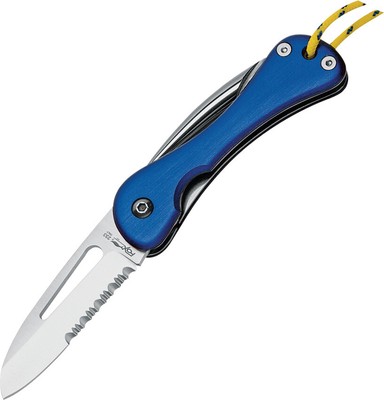
#SAILING KNIFE MARLIN SPIKE FREE#
It is often used to help free up jammed knots in a hurry, particularly if the knot has been repeatedly soaked and strained over the course of time. It should be tapered to a fine point, but not quite so sharp as to damage or cut the individual fibers of the line or rope. The marlinspike is the primary tool for everything rope-related.

Notice how the handle has been drilled to attach a lanyard. With a little bit of practice, this produces an extra-clean cut without sawing and damaging the line.Ĭenturies later, the "Sheepsfoot Blade" is probably still one of the best for cutting rope & lines. and then strike the top of the blade with a mallet.

then set the blade on the line exactly where he wants it. This enables the rigger to place a line on a cutting block or flat surface. The other advantage is that a true sheepsfoot blade carries a perfectly straight cutting edge. Unlike a sharp-tipped hunting blade (drop point clip, Bowie, etc.), the idea is to reduce the possibility of getting accidentally jabbed while working and moving around aboard the ship. It is not a fighting blade or weapon, but in the application of a rigging knife, it is understood to be one of the best blade designs for cutting rope. It is named after its blunt, rounded tip and flat bottom edge which closely resemble the profile of a sheep's foot. Throughout history, sailors, riggers and shipwrights have relied upon the traditional "sheepsfoot blade" for everyday use aboard the ship.


 0 kommentar(er)
0 kommentar(er)
